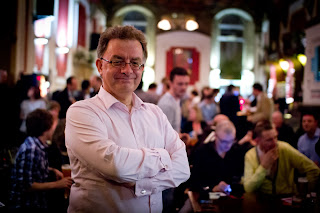Literature Review #2
“Magic and Memory: Using Conjuring to Explore the Effects of Suggestion, Social Influence, and Paranormal Belief on Eyewitness Testimony for an Ostensibly Paranormal Event” by Krissy Wilson and Christopher C. French
Wilson, Krissy, and Christopher C. French. “Magic and Memory: Using Conjuring to Explore
the Effects of Suggestion, Social Influence, and Paranormal Belief on Eyewitness
Testimony for an Ostensibly Paranormal Event.” Frontiers in Psychology, vol. 5,
FRONTIERS RESEARCH FOUNDATION, 2014, pp. 1289–1289,
doi:10.3389/fpsyg.2014.01289.
(Link: https://bit.ly/37s1Raq)
Researchers exposed participants to fake psychics and asked them to complete a questionnaire about what they witnessed. Participants were exposed to different types of social influences (negative, positive, and none) as well as verbal suggestion. This study essentially found that people’s memories tend to change based on what they are told and that people who believe in the paranormal tend to falsely recall the ostensibly paranormal event (OPE) continuing to occur, even after it had ended in reality.
I wasn’t able to find much about Krissy Wilson, but the other author, Christopher French, is highly qualified to speak about the psychology of paranormal belief. According to Goldsmiths, “Professor Chris French is the Head of the Anomalistic Psychology Research Unit in the Psychology Department at Goldsmiths, University of London. He is a Fellow of the British Psychological Society and of the Committee for Skeptical Inquiry and a Patron of the British Humanist Association. He has published over 150 articles and chapters covering a wide range of topics. His main current area of research is the psychology of paranormal beliefs and anomalous experiences. He frequently appears on radio and television casting a sceptical eye over paranormal claims. His most recent book is Anomalistic Psychology: Exploring Paranormal Belief and Experience.”
(Link: https://www.gold.ac.uk/psychology/staff/french/)
One key term in this study is “verbal suggestion,” which refers to when someone says that something is a certain way, even if it is not. In the context of the study, it refers to when the fake psychic suggested that the key was continuing to bend after it had been placed on the table even though the key was not. Another key term is “social influence,” which is linked to verbal suggestion. In this study, social influence meant that the co-witnesses that the participants were paired with were stooges who would either report that the key continued to bend (positive social influence), that the key did not continue to bend (negative social influence), or would not suggest anything (no social influence).
QUOTES
1. “Across the experiment as a whole, 49 out of 180 participants (27.2%) reported that the key continued to bend and 23 (12.8%) believed they had witnessed something paranormal in the demonstration as a whole. Of the 88 believers, 33 (37.5%) reported that the key continued to bend and 20 (22.7%) believed they had witnessed paranormal forces in action. Note that this implies that many of the believers who reported that the key carried on bending did not believe that this particular demonstration involved genuine paranormal forces, presumably believing instead that it was based upon some form of trickery. Of the 92 disbelievers, only 16 (17.4%) reported that the key continued to bend and only 3 (3.2%) of those classified as disbelievers reported that they had witnessed paranormal forces in action” (Wilson 6).
2. “[...] a relatively mild verbal suggestion from a fake psychic that a bent key continued to bend after it had been placed upon a table was sufficient to lead a substantial number of witnesses to erroneously report that the key had indeed done just that” (Wilson 7).
3. “When a stooge co-witness insisted that the key continued to bend, 60% of the participants agreed. When the stooge co-witness insisted that the key did not continue to bend, the percentage who reported that it did was substantially reduced, but even then 23.3% reported that it did. This is a powerful demonstration that it is not only what witnesses to an ostensibly paranormal event believe that they have actually perceived at the time that determines their subsequent reports but that such reports will also be influenced by discussion with co-witnesses in line with findings from memory conformity research” (Wilson 7).
This source is useful because it shows how easily influenced eyewitnesses are, especially when it comes to OPEs. It also shows how people who believe in the paranormal are more likely to jump to the conclusion that OPEs are actually paranormal while nonbelievers are far less likely to see OPEs as actually paranormal. When it comes to the question of why people continue to believe in ghosts despite the lack of scientific evidence, this source shows that many people may see non-paranormal situations as actually paranormal and use that to support their beliefs.


Comments
Post a Comment